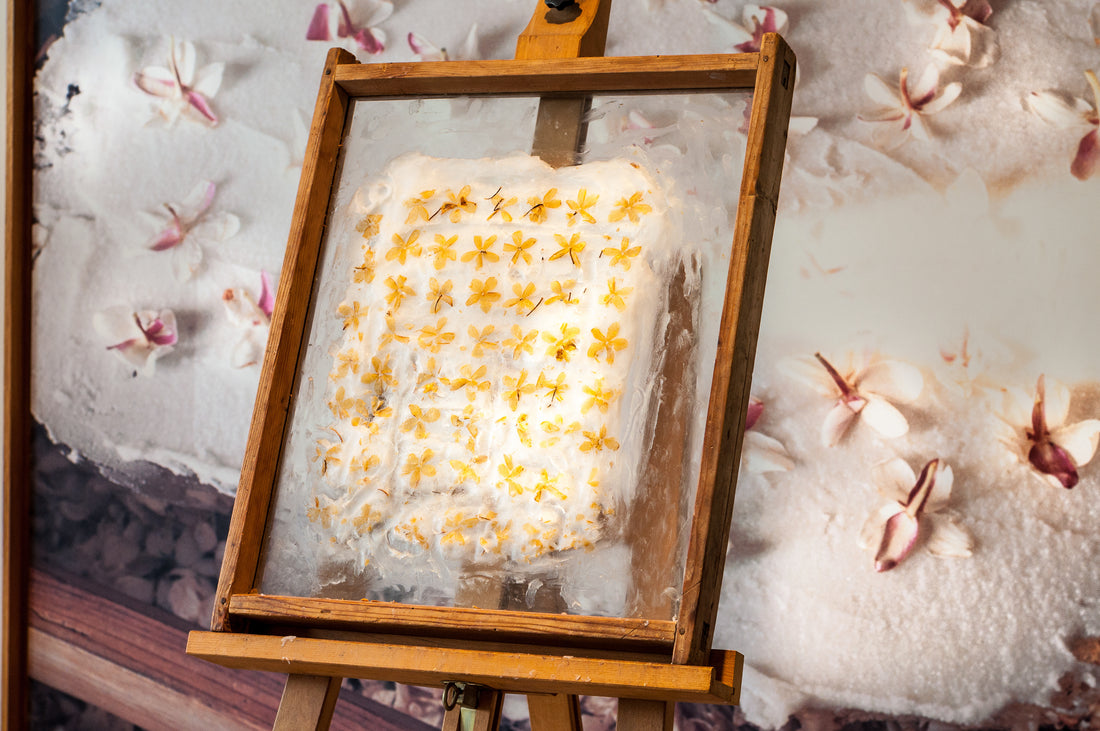Once upon a time the oils used in perfumery were produced by pressing or steaming various parts of a plant (bark, leaves, flowers, stems and/or fruit).
We at Lucullion have discovered 11 methods of extraction. (There may be more). Those methods of extraction are the following:
Steam Distillation Process
Expression Process
Enfleurage Process
Maceration Process
Extraction with Volatile Solvents
Hydro-distillation Process
Liquid Carbon dioxide
Enzymatic Extraction
Microwave Extraction Process
Adsorption Process
Combined Process
Today we are going to learn about number 3. The best known enfleurage technique was developed in Grasse in France to extract the fragrance from delicate plants that could not withstand distillation. This technique was abandoned in the 1930s and replaced by extraction that involves the use of volatile solvents.
Enfleurage process, one of the first methods used (it's no longer used today) is based on the solubilization of the aromatic (essential) oils from the oil bearing materials in a fat phase by means of suitable contact, and later dissolving out the aromatic oil from the fat phase in alcohol. The left-over fat phase can be reused. The alcohol is recovered to yield the essential oil.
The process consists of spreading an appropriate fat layer (i.e., completely refined lard or tallow) Uniformly of both sides of the surface of the trays (glass or steel), and the material to be extracted (usually a flower) is then spread over the fat surface. Each prepared tray is placed in tiers so that the flowers (petals) are enclosed between two layers of fat, both the upper and lower fat phase absorbing the perfume released. After the appropriate contact time (days), the process is renewed periodically until the fat charge becomes saturated with the perfume of the natural material (i.e., the flower). The rich fat produced is known as "Pomade" in commerce. The pomade is next extracted with deodorized ethanol to recover the aromatic oil from the fat phase. The "concretes" are obtained after removal of the alcohol and the "absolute" are made by crystallization from alcohol. Often the "concretes", free from the fat used, are purified from alcohol to yield "absolutes".
The residual flowers are often further extracted with appropriate volatile solvents to recover the remaining perfume material for use in making artificial flavor. Many years ago in India, sesame seeds were used instead of a hard fat for recovery of aromatic oil from flowers (i.e., Jasmine). The seed is mixed with flower in a hand driven or electrical-driven Ghani and crushed in a manner like the crushing of seeds. During crushing, the rotating pestle grinds the sesame seeds that in turn get mixed with the flavor components of the flower and absorb the perfume by contact. That oil that comes out is scented oil.
The enfleurage process presents a few disadvantages. The amount of aromatic oil is low. The fat used is not a pleasant material to handle, and it becomes rancid after several uses. This method of extraction is no longer used.

